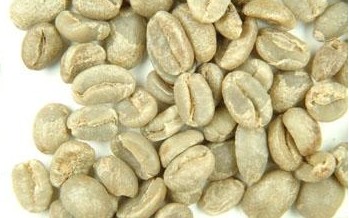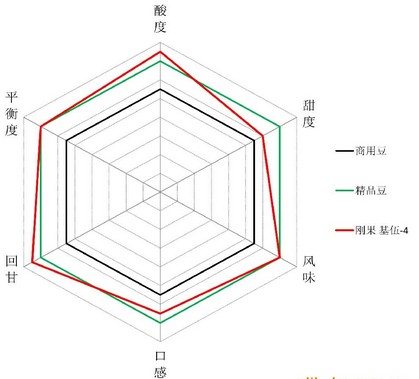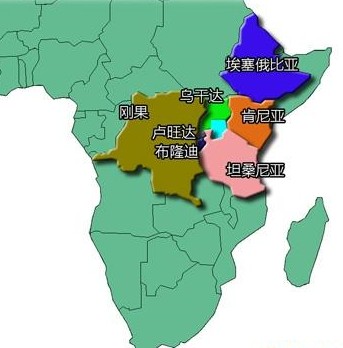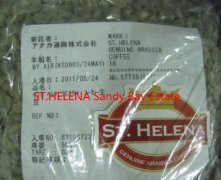Fine coffee beans African coffee raw beans Congo Kivu 4/Kivu 4
Kivu coffee is slightly acidity, but citrus acidity is slowly rising full, so the taste is clear and peaceful, coupled with floral, vanilla and erratic tobacco flavor, is a very refreshing and playful coffee.

[product name] Kiwu 4 (Kivu 4)
Congo (D.R. Congo)
Washing
[baking] recommended baking degree: medium or deep baking
[cup review] has a unique dry aroma: fresh smell similar to soil; shallow flood has a bright sour taste, similar to Kenya, and a bitter taste similar to tobacco. The overall performance of deep baking is between Kenya and Mantenin in Indonesia.

Kivu coffee is slightly acidity, but citrus acidity is slowly rising full, so the taste is clear and peaceful, coupled with floral, vanilla and erratic tobacco flavor, is a very refreshing and playful coffee.
About Congolese coffee.

The Democratic Republic of the Congo (DRC), known as the Democratic Republic of the Congo (DRC), runs through the north of the equator, mainly in central Africa, adjacent to another Congo (Congo-Brazzaville) across the Congo River. The Democratic Republic of the Congo was once known as Zaire, the capital of Kinshasa. In Chinese, the word "Jin" of the capital was added to the name of the country to distinguish between the two countries.
The famous coffee in the Democratic Republic of the Congo is Kivu. It gets its name from Lake kivu on the border with Rwanda. In fact, there are two kinds of kivu in Congo: the western part is low-lying, which is not authentic kivu, while the eastern part is high-lying and close to Lake kivu, producing authentic Kivu-4 coffee.
Due to the continuous civil war in Congo, the production and treatment of coffee beans have been taught, so although it is bred by Lake Kivu, the quality of coffee is generally worse than that of Rwandan coffee on the east coast.
This year, Congo Kim joined the East African Fine Coffee Association (Eastern Africa Fine Coffee Assosiation) in East Africa, with a view to further improving the output and quality of exported coffee.
About African boutique coffee
It is well known that coffee originated in Ethiopia, the earliest Arabica variety, while Robusta originated in Uganda, both of which are from Africa. As the hometown of coffee, Africa not only has many excellent coffee varieties, but also is still one of the three largest coffee producing areas in the world. The flavor and taste of African coffee is the most complex and excellent; due to the appropriate altitude and climate, African coffee tastes better than coffee from South America and Southeast Asia; this is an unofficial evaluation from the International Coffee Organization (ICO). However, due to poverty, coupled with deficiencies in publicity and brand building, backward coffee cultivation and harvesting technology and lack of government regulation, the export volume and popularity of coffee beans in Africa are far lower than those of coffee producers in South America and Southeast Asia, led by Brazil. Over the last decade, several major African exporters (such as Ethiopia, Kenya, Uganda, Tanzania and Rwanda) have stepped up regulation of coffee production and trade, reducing the circulation of raw coffee beans and bringing better quality African coffee beans to the world by improving planting, harvesting and storage technologies. Better quality has promoted the brand construction of boutique coffee in various countries. Nowadays, coffee beans such as AA (Kenya AA) of Kenya, Yirgacheffe of Ethiopia, Harald (Harar) and Bujisu AA (Bugisu AA) of Uganda have become the ranks of boutique coffee with world reputation; it is believed that more and more African coffee varieties will be recognized by people and join the ranks of world boutique coffee.
Important Notice :
前街咖啡 FrontStreet Coffee has moved to new addredd:
FrontStreet Coffee Address: 315,Donghua East Road,GuangZhou
Tel:020 38364473
- Prev

Boutique coffee learn St. Helena Island coffee beans
Andy BayEstate is located in an ancient valley south of bamboo hedge. Due to the climate, it is equivalent to more than 1000 meters above sea level. The annual rainfall is about 3000 mm and the sun lasts for more than 4 months. [manor]: Sandy Bay Estate [country]: St. Helena Island [area]: Sandy Valley Bay area Sandy Bay [producer]: Sandy Bay Estate
- Next

Boutique Coffee Variety introduction Rosa (Geisha)
Rosa originated from a very rare wild species in Ethiopia, and the beans may be named after this coffee bean found near the local village called Rosa. The coffee tree is tall, its leaves are slender, and it is not afraid of coffee rust. It is characterized by a wide gap between branches on the trunk. The appearance of raw beans is slender, and ripe beans have strong and rich fruit aromas. I personally feel full-bodied.
Related
- Beginners will see the "Coffee pull flower" guide!
- What is the difference between ice blog purified milk and ordinary milk coffee?
- Why is the Philippines the largest producer of crops in Liberia?
- For coffee extraction, should the fine powder be retained?
- How does extracted espresso fill pressed powder? How much strength does it take to press the powder?
- How to make jasmine cold extract coffee? Is the jasmine + latte good?
- Will this little toy really make the coffee taste better? How does Lily Drip affect coffee extraction?
- Will the action of slapping the filter cup also affect coffee extraction?
- What's the difference between powder-to-water ratio and powder-to-liquid ratio?
- What is the Ethiopian local species? What does it have to do with Heirloom native species?

